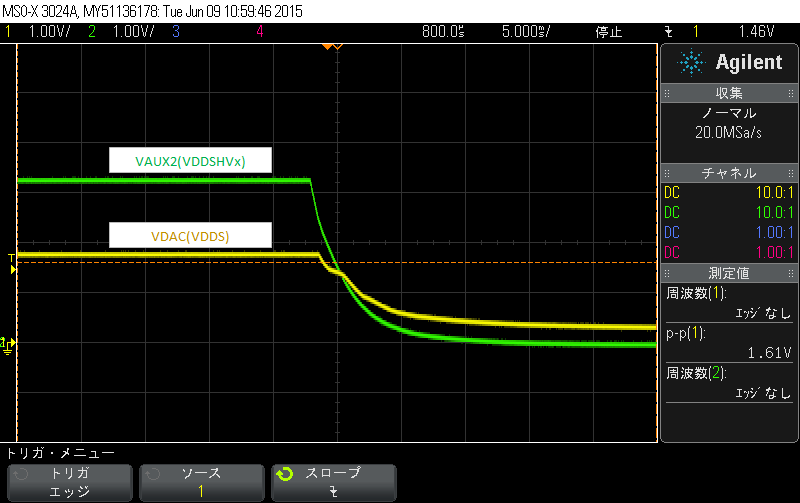Hi,
I have some question about AM335x power down sequence.
Could you please answer my question?
I have gotten the waveform of VDAC(VDDS) and VAUX2(VDDSHVx) on AM335xEVM.
I suspect that it violates the following description on AM335x datasheet.
"It is recommended to maintain VDDS ≥1.5V as all the other supplies fully ramp down to minimize in-rush currents."
Does this waveform violates this description?
If yes, please tell me what I should do to solve this.
Best regards,
Keigo Ishii


